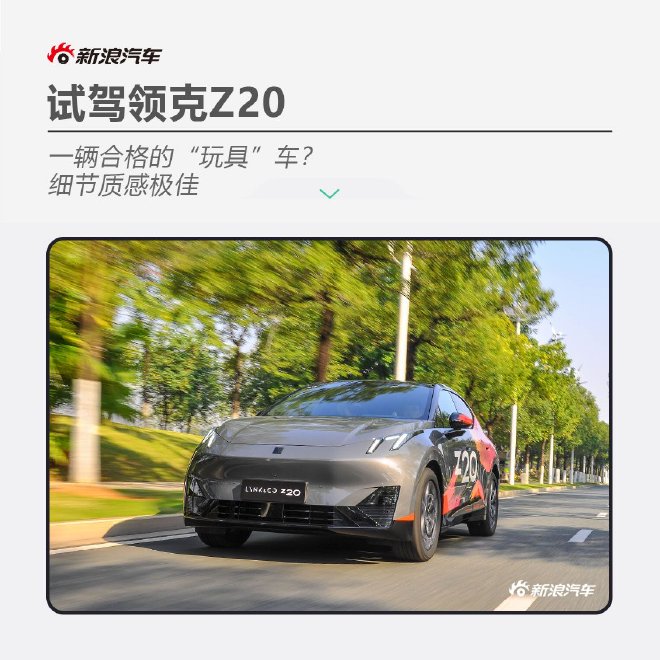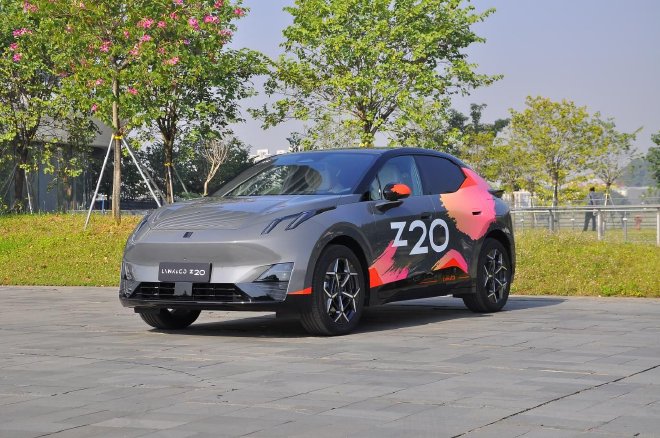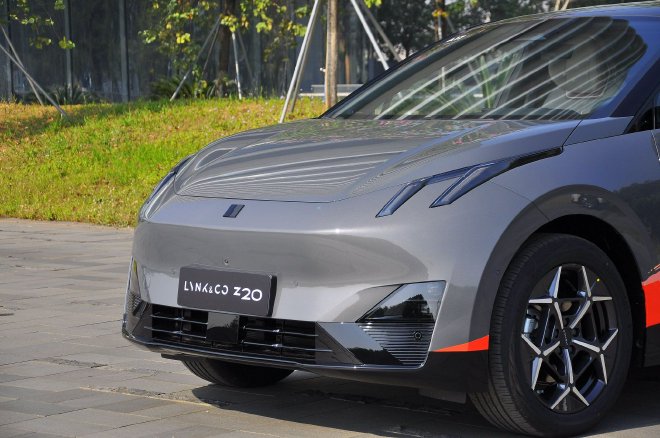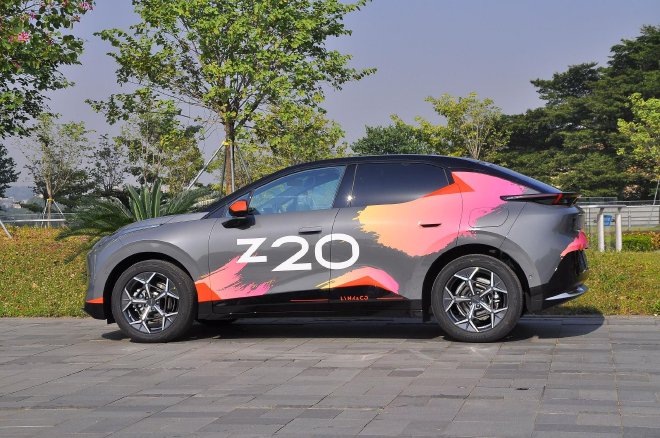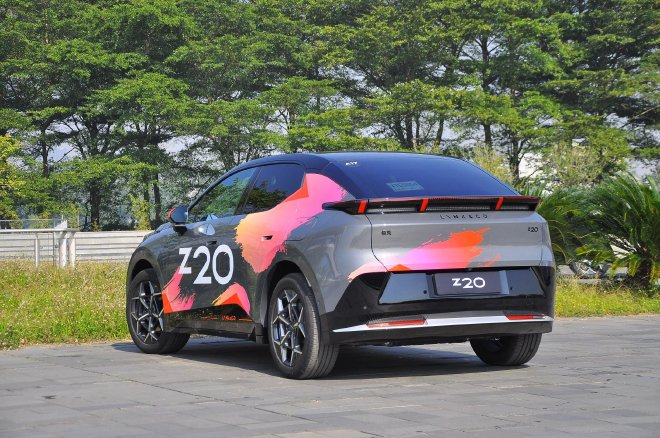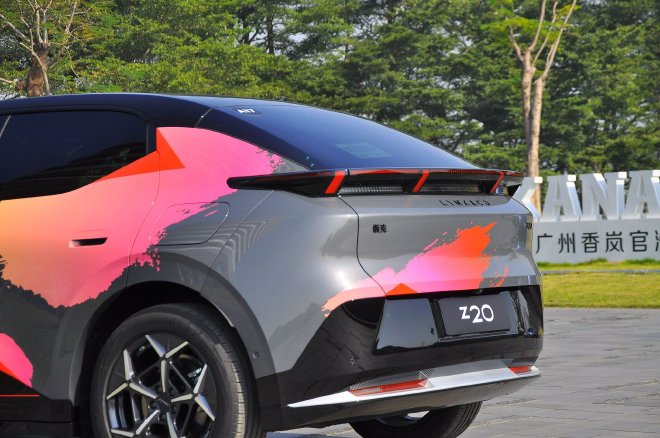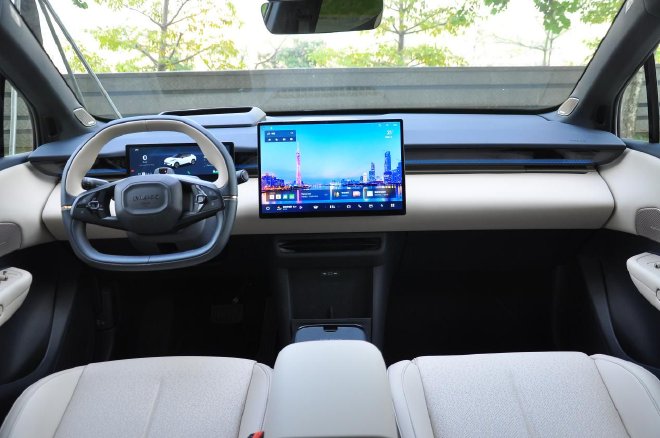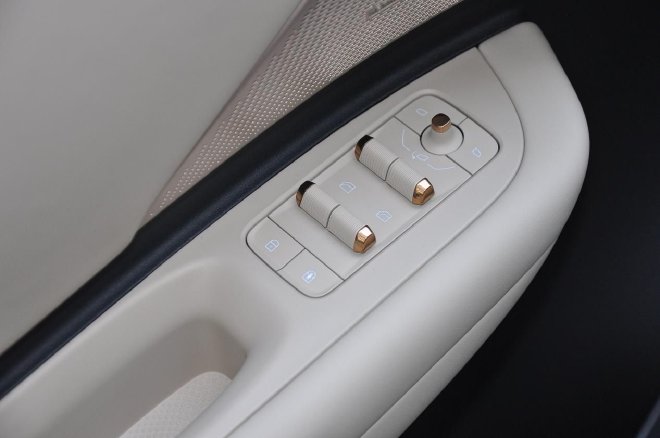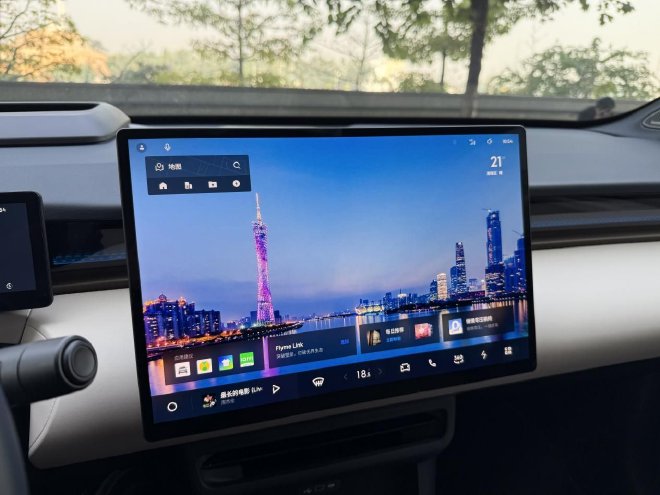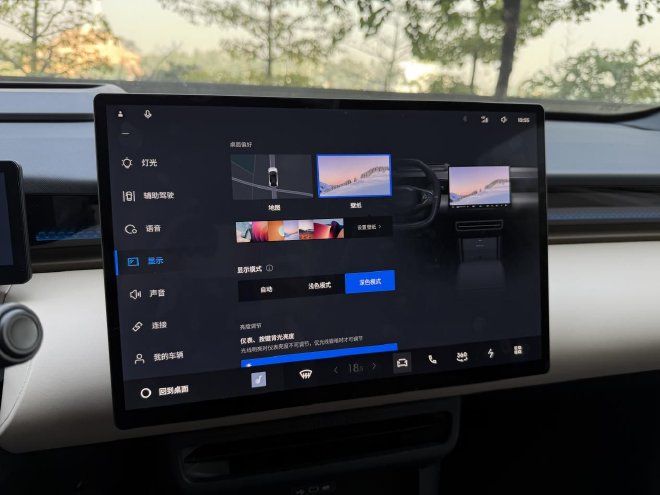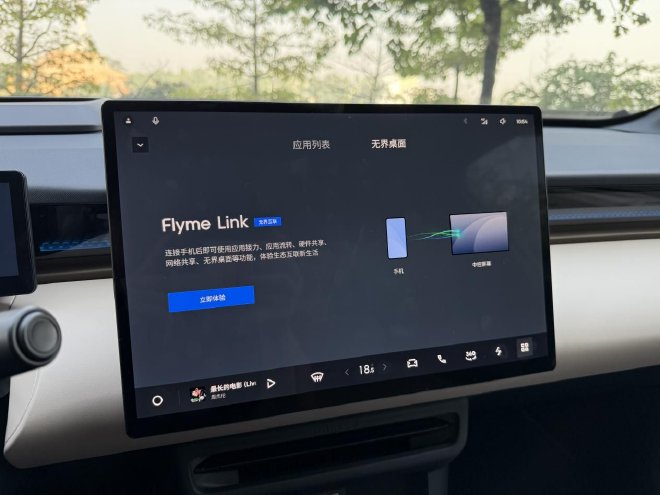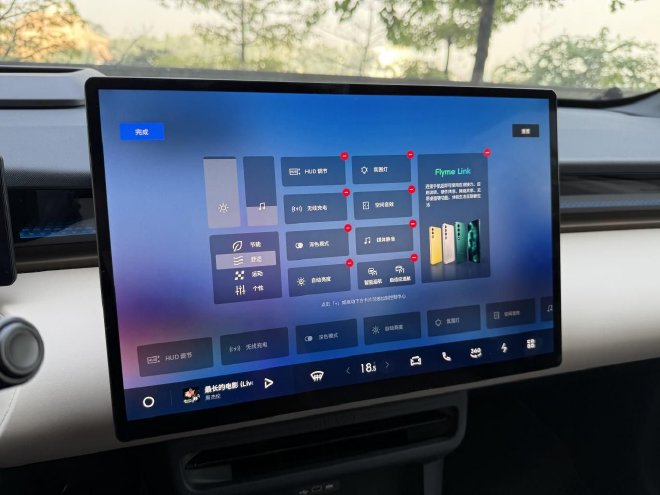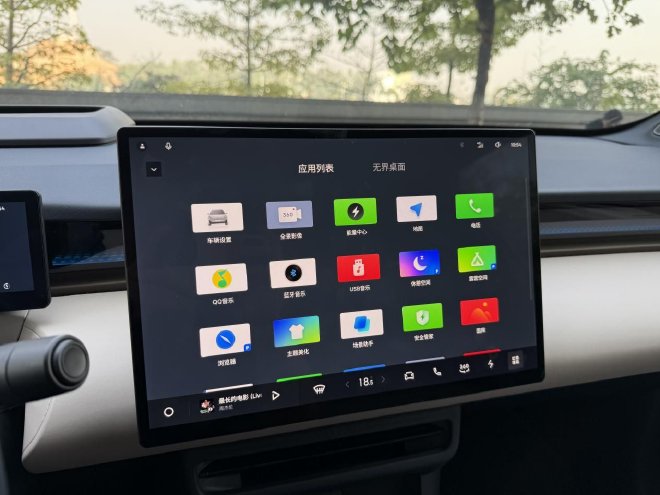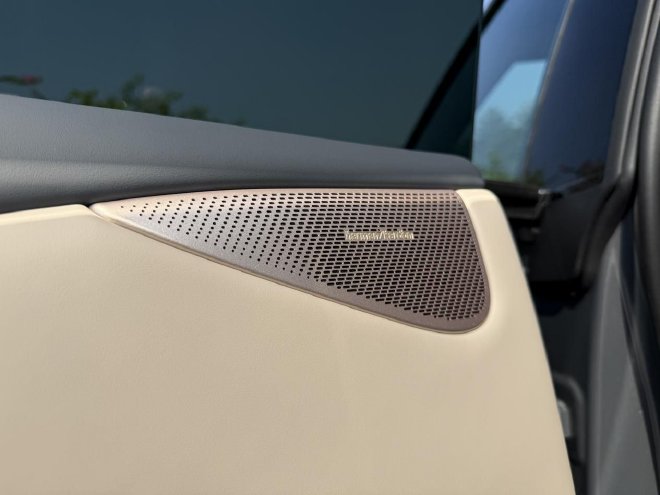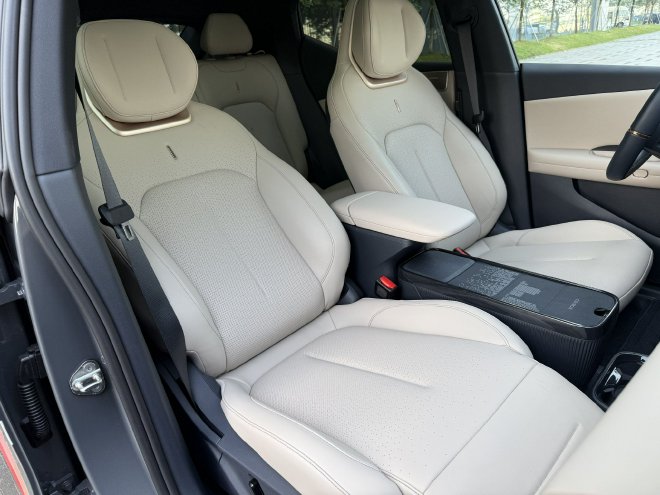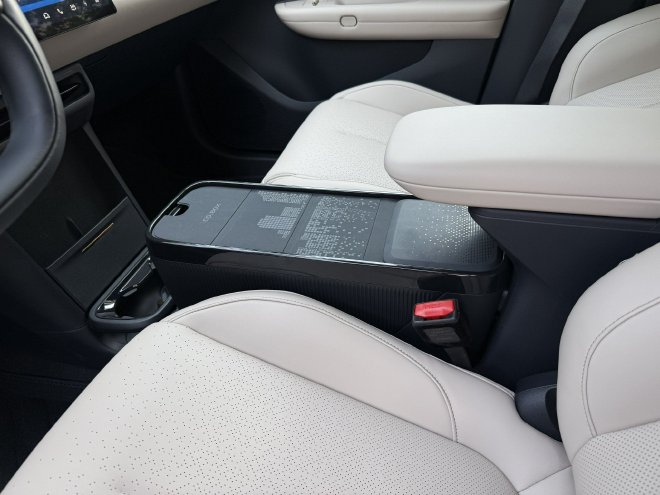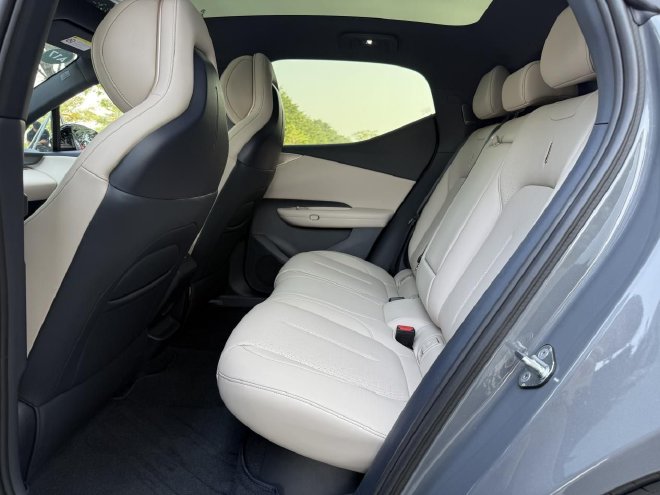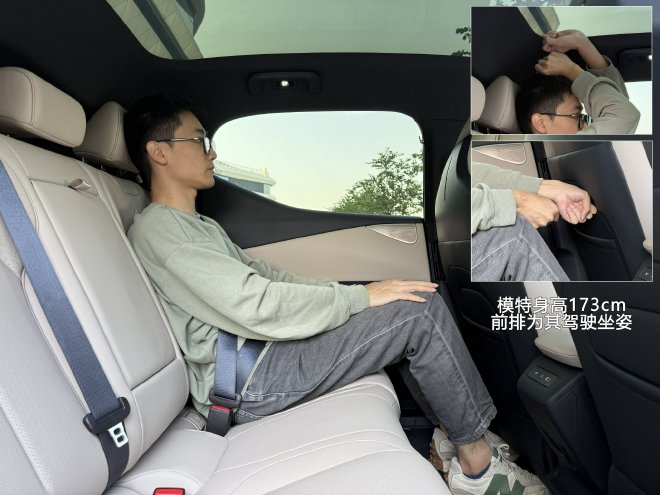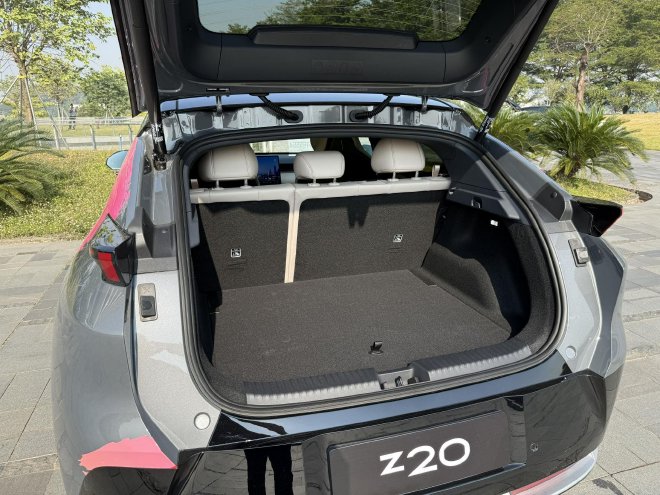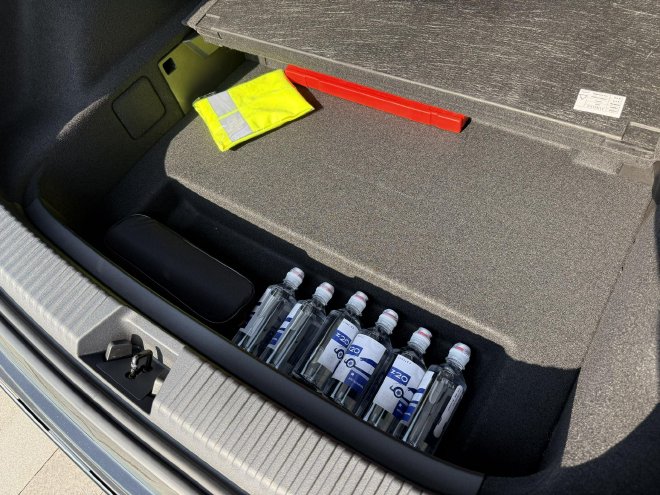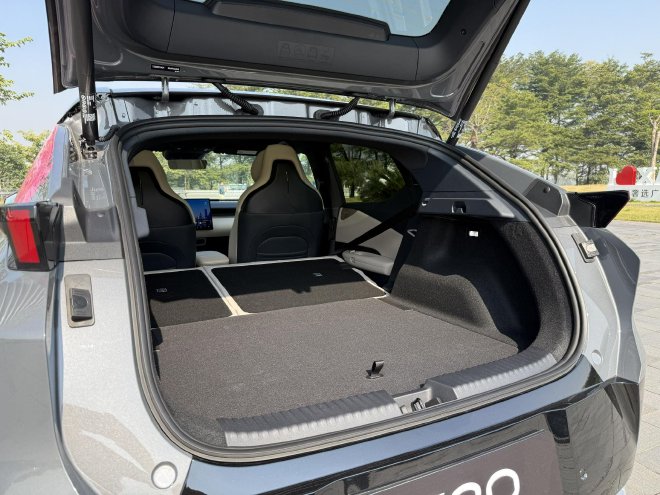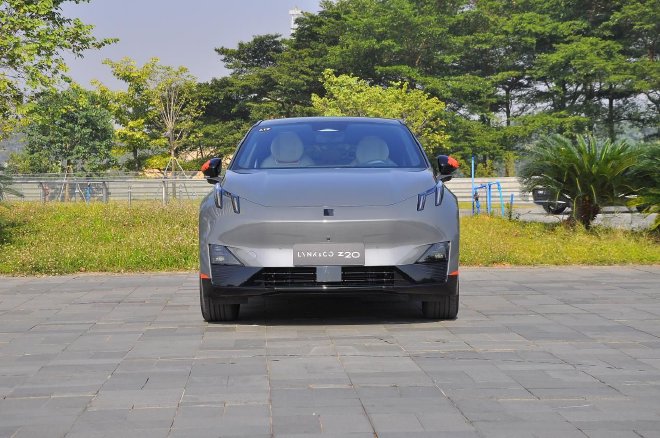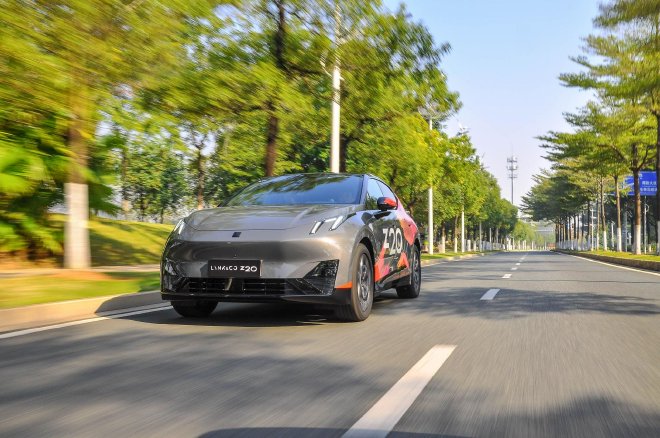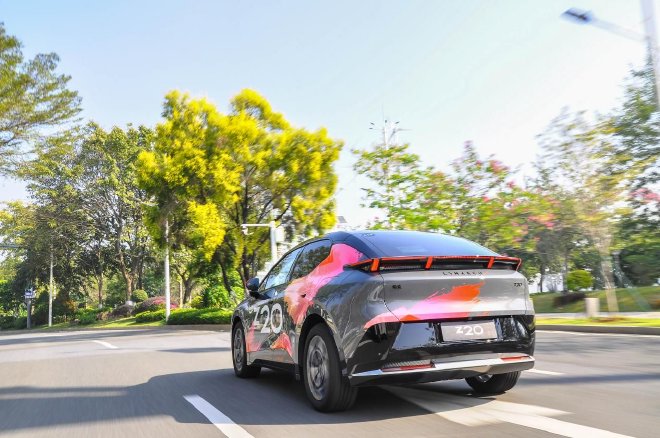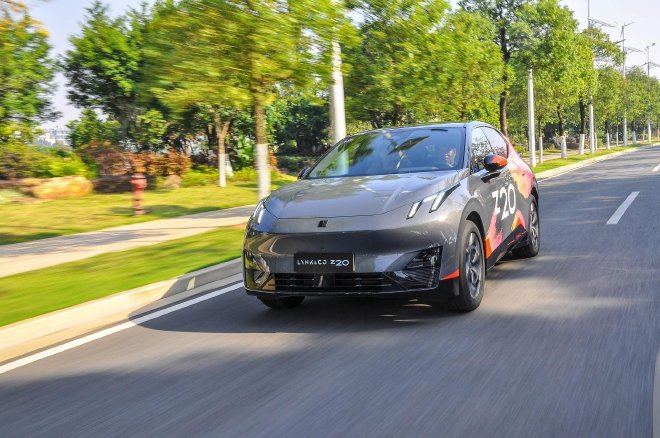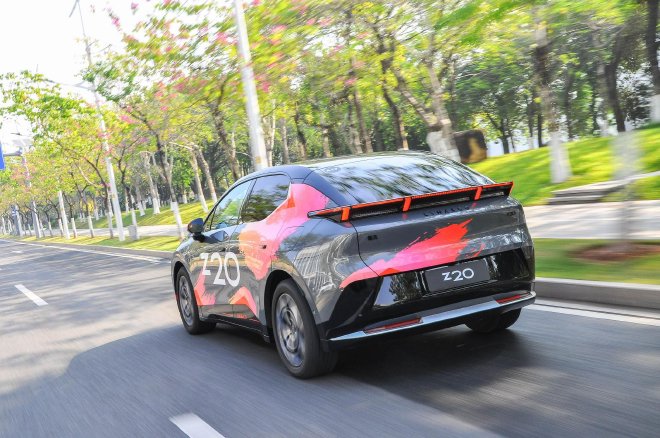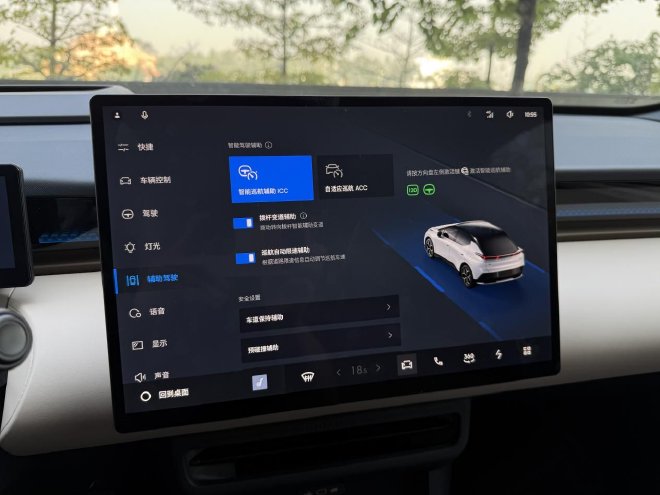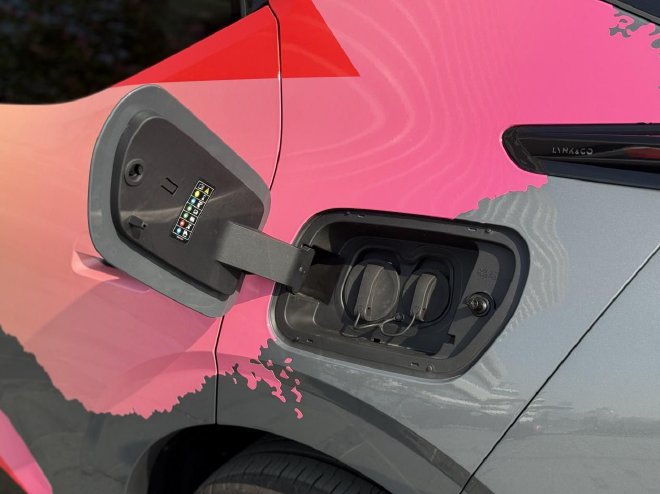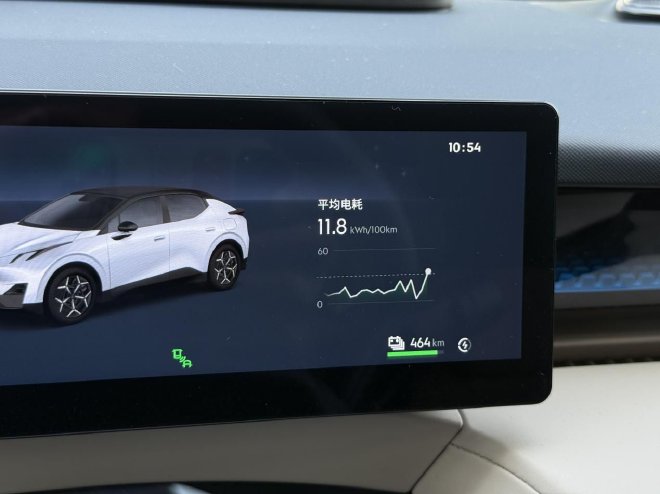The Lynk & Co Z20, the brand’s latest global model, has begun pre-sales. The price ranges from 146,000 to 161,000 yuan (22160$). The car debuted in Milan, showcasing its design confidence. Its design impresses at first glance. However, looks alone won’t secure success. Recently, Sina Auto conducted a detailed test drive of the Z20. Let’s explore its standout features. We collected questions from Weibo users about the new car. Here’s a quick overview before diving into details. 1. How does it look? Any highlights? The C-pillar lines and taillights are unique. The roof and rear window lines integrate smoothly, and the spoiler blends with the taillights. 2. Any breakthroughs in the smart cockpit? The smart cockpit features Flyme Auto. Lynk & Co developed it in deep collaboration with Meizu. No competitors match it in this price range. 3. What are the configuration highlights? Three standout features catch the eye: the Harman Kardon 14-speaker system, the front seats, and the versatile central armrest design. 4. How is the space? While it may not match rivals focused on family use, it still offers ample space. 5. How is the power performance? The Z20 features a rear-mounted single motor across all models. The motor delivers 250 kW, achieving 0 to 100 km/h in 5.3 seconds, with a top speed of 190 km/h. 6. How does it handle? The Z20’s chassis tuning differs significantly from the Zeekr X. It has a sportier overall setup. 7. How is the energy consumption? On the test drive day, with a temperature around 25 degrees and smooth urban roads, the Z20 showed an average energy consumption of 11.8 kWh/100 km over half a day of normal driving. How does it look? Any highlights?
First, let’s look at the design. The Lynk & Co Z20 uses the second-generation design language. It exudes a strong sense of futurism. The headlight design is iconic to the Lynk & Co family, making it highly recognizable. The lower grille features an active intake design with six adjustable levels. It automatically adjusts based on environmental temperature and cooling needs. When closed, it directs airflow quickly, reducing drag and enhancing range. When open, it optimizes cooling, maintaining the vehicle’s performance.
The new car offers several color options. These include Dongji Blue, Iceland Gray, Komodo Pink, Sicily Rice, Greenland White, Tahiti Black, and Puerto Rico Red.
The new car measures 4460mm in length, 1845mm in width, and 1573mm in height. It has a wheelbase of 2755mm. The Lynk & Co Z20 features semi-hidden door handles that many consumers prefer. It includes dual micro-switches for easy electric unlocking. Additionally, the Lynk & Co Z20 uses a water-cut design. This design eliminates the visual break at the bottom edge of the window. It creates smoother lines along the side of the car and enhances the overall visual simplicity.
The Lynk & Co Z20 features an aerodynamic design. The team conducted multiple wind tunnel tests and over 400 simulations. This resulted in a class-leading drag coefficient of 0.25 cd. The lower drag increases the vehicle’s range by 52.5 km. This translates to savings of four to five thousand yuan for users in battery costs.
The design of the rear is unique. The roof and rear window create a strong sense of unity. The lines flow smoothly. The integration of the rear wing and taillights forms a visually harmonious aesthetic. It also optimizes aerodynamics. The taillights use 14 chips, reaching a brightness of 1,200 nits. They support three light functions: welcome, farewell, and flowing turn signals. Does the smart cockpit have new breakthroughs?
The Lynk & Co Z20 features a conventional interior design. It has a symmetrical layout and a floating screen. This design is simple and user-friendly. The interior includes a large area of soft materials. The quality feels good, and the touch is pleasant for passengers.
The interior features many accents made of rose gold inlays created by PVD physical vapor deposition. The Lynk & Co Z20 uses these details to show consumers it is a high-quality, boutique car.
The main highlight of the interior is the smart cockpit. The new car features Flyme Auto. Lynk & Co and Meizu developed it together. This collaboration offers users a top-tier in-car experience at the same price point. The 15.4-inch 2.5K central control screen serves as the core of the system. The interface resembles Huawei’s HarmonyOS layout. The bottom contains the dock, and a row of widgets sits above it.
Flyme Auto offers two different theme desktops. The wallpaper desktop supports custom wallpapers. You can use your beautiful landscape photos or family portraits. The second option is the map desktop. It works like most car displays. It shows a large map, which is very practical.
The Lynk & Co Z20 features our domestically produced 7nm automotive-grade Long Eagle One Plus chip. This chip enhances the overall smoothness of the vehicle’s system. We developed Flyme Auto in collaboration with a smartphone manufacturer. It excels in driver connectivity. Connecting a phone allows access to an infinite desktop, mirroring the phone screen. It fully retains your phone usage habits. The experience is highly efficient.
The lower dock, the small widgets above, and the dropdown notification bar support customization. Users can adjust the layout based on their habits.
The application center uses a layout similar to Apple TV. The total number of apps is not large, but it includes the commonly used ones. Recently, I encountered many new cars from Geely Group. Most of these cars now use the Flyme Auto system. This system is user-friendly. Its UI design is attractive, its features are comprehensive, and its operation is logical. Many say HarmonyOS is great, but Flyme Auto offers a comparable experience. Importantly, Flyme Auto has a much lower entry point. You can access it for around 100,000. What are the highlights of the configuration?
A new car with a starting price of under 150,000 yuan (20640$) targets a market similar to MINI and smart. I didn’t expect much from its features. However, after experiencing the Z20, I found several standout features. For example, the model we tested has a Harman Kardon 14-speaker system. It offers a 7.1 surround sound experience. This audio system isn’t just a simple rebrand. Lynk & Co collaborated with Harman’s global engineers. They tailored the system to the Z20’s cabin characteristics. The development process included selection, professional tuning, and model integration. It took 10 months and multiple rounds of optimization.
A new car under 4.5 meters long features zero-pressure seats, which is surprising. The front seats, called lazy zero-pressure seats by Lynk & Co, adjust from 87° to 159°. They use a design with 10 layers of cushioning and 9 layers of back support for excellent comfort. The seats also include heating, ventilation, and memory functions.
The space under the central armrest features a versatile island design. Users can transform it based on their needs. They can turn it into a storage box, a refrigerator, or a pet bed. This feature is both fun and practical. How does the space perform?
The new car measures less than 4.5 meters long. Its wheelbase reaches 2755 mm. Most adults will find the legroom ample.
We worried about the rear headroom in the Z20 due to its sloping design. However, after experiencing it, we found that the headroom in the Lynk & Co Z20 is well-managed. There’s no need for concern.
The Lynk & Co Z20 features a dual-layer trunk design. It has a foldable, adjustable divider in the middle. The total capacity reaches 450 liters.
The trunk space expands to 1410 liters when the second row is folded down. The flatness is good. How is the power level?
In terms of power, the Lynk & Co Z20 features a rear-mounted single motor across all models. The motor delivers a maximum power of 250 kW. It uses Xpin winding technology to reduce DC resistance and improve transmission efficiency. The new car accelerates from 0 to 100 km/h in 5.3 seconds. It reaches a top speed of 190 km/h. In its price range, this performance ranks at the top.
The test drive experience shows that the car accelerates from 0 to 60 mph in 5 seconds. This delivers a thrilling acceleration experience. The low center of gravity helps the vehicle maintain its posture during acceleration. How does it handle?
The chassis tuning of the Lynk & Co Z20 surprised me. The new car features a front MacPherson and rear five-link suspension. Its overall tuning differs from the Zeekr X on the same platform. The chassis feels much sportier. The Lynk & Co Z20 uses a three-channel damper. This design effectively separates the paths of piston force, spring force, and bump stop force. During our test drive, the car provided strong support over bumps and speed bumps. It maintained excellent stability and agility on complex roads.
During turns, the short body and excellent suspension keep the car stable. The steering system features the latest Bosch DP-EPS electronic power steering. It has almost no play, and the steering wheel offers comfortable damping feedback. The steering effort adjusts based on the driving mode. Drivers who prefer easy handling or sporty control can find their ideal steering feel. However, we noticed that the Z20’s turning radius is larger than its competitors, making it less agile in some situations, like U-turns. We consulted Lynk & Co engineers about this. They explained that the larger tire angles might impact safety during collisions, potentially intruding into the cabin space. Thus, Lynk & Co set a conservative turning radius for safety reasons.
The Lynk & Co Z20 features Brembo ventilated brake discs at the front and rear. It uses a Bosch One-box brake controller. The calipers come from Wabco. The official claim states the car stops from 100 km/h in just 33.28 meters. In real driving, the brake pedal feels comfortable. The feedback and travel are easy to adapt to. The car also includes CST comfort braking. This system actively adjusts brake pressure. It helps control the vehicle’s posture and prevents pitching during braking.
The Lynk & Co Z20 features an L2-level intelligent driving assistance system. The new car integrates 22 smart sensing hardware components. It includes a 1.7 million pixel forward HD camera, four millimeter-wave corner radars, one millimeter-wave forward radar, twelve ultrasonic sensors, and four 360-degree surround cameras. The system supports full-speed range assistance from 0 to 150 km/h. It also enables automatic lane changes, large vehicle avoidance, and smart speed adjustments. Additionally, the new car includes an intelligent parking assistance system. The APA automatic parking system can recognize 98% of parking spaces. The RPA remote parking function allows users to control the vehicle’s parking in and out using just their smartphones. How does it perform in terms of energy consumption and recharging?
The Lynk & Co Z20 features a 61.47 kWh battery. It offers a range of 530 kilometers. If you commute 35 kilometers daily, you only need to charge it every two weeks. It’s very convenient.
On the test drive day, the temperature reached about 25 degrees. We mainly drove on smooth city roads. The Lynk & Co Z20 performed well over half a day, with an average energy consumption of 11.8 kWh/100 km. This performance is impressive. In terms of charging, the Lynk & Co Z20 excels. The new car supports 800V fast charging. It can reach a maximum charging power of 300 kW and uses 4.5C flash charging technology. This means you can charge from 10% to 80% in just 15 minutes, adding over 370 kilometers of range. This charging speed allows you to recharge while using the restroom, having coffee, or enjoying a light meal. It also works with any charging station, making it convenient to charge anywhere. Additionally, the Lynk & Co Z20 features a power output function. It acts like a mobile power bank. It supports vehicle-to-device and vehicle-to-vehicle discharging, meeting various power needs for outdoor camping and picnics. This makes your trips more enjoyable. In summary, after a day of experience, the Lynk & Co Z20 reminds me of the smart and MINI brands. They all focus on design and quality. However, the Lynk & Co Z20 is different. It balances fun with practicality, offering space and features without sacrificing daily needs for individuality. In a market that often favors “big and complete,” having such a slightly rebellious option is quite interesting, isn’t it?
